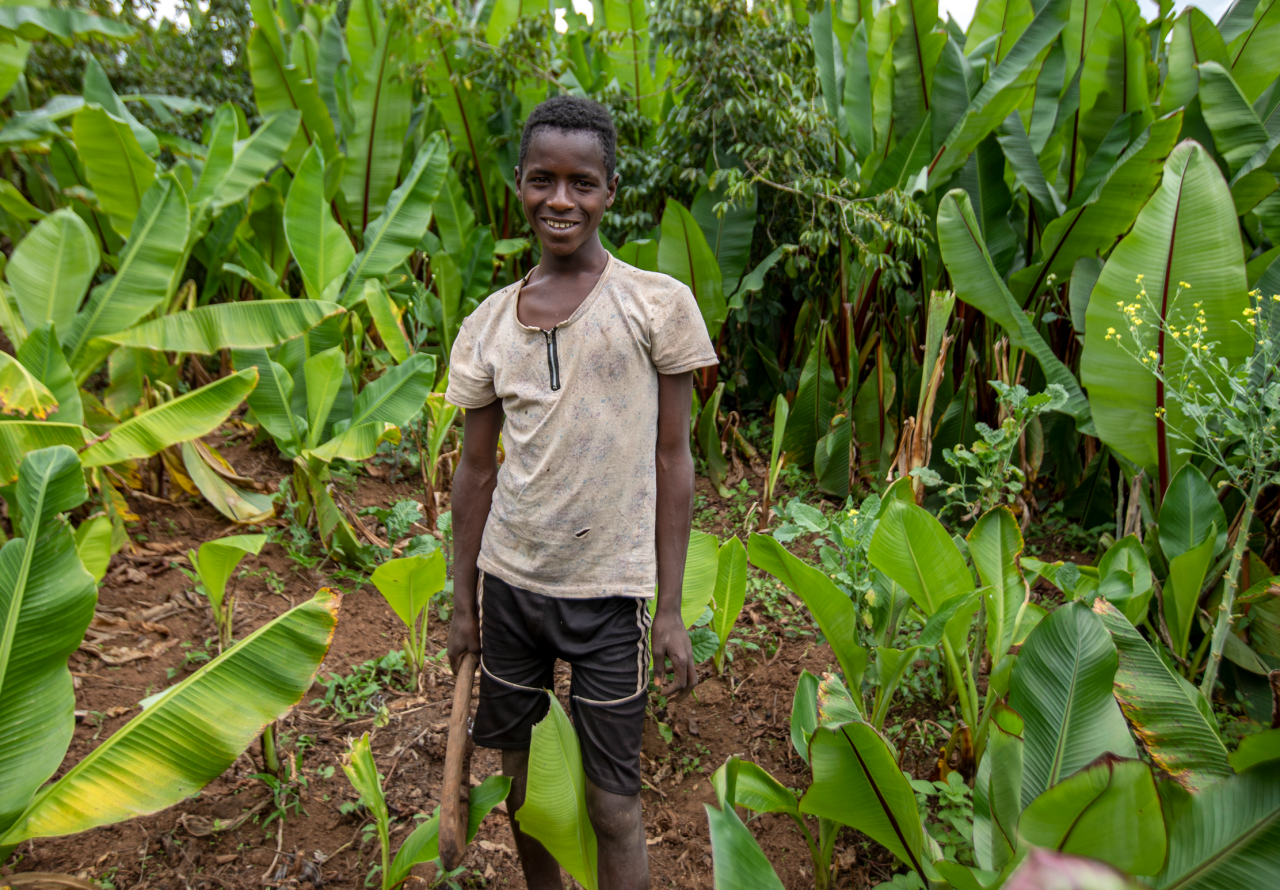In a typical village in Ethiopia, life gets really busy before dusk. With no access to electricity, rural communities rush to get the most out of the last rays of sunshine preparing dinner, fetching water, and getting the chickens into handmade baskets hanging in the air so they don’t get eaten during the night.
Nahome, a 13-year-old boy from Mosebo village, Ethiopia, is just coming home, right before the evening pulls its blanket of darkness over his family hut and roads become deserted. During the day, he travels across long distances on foot to go to school and then to the family farm where he supports his father in herding cattle and crop harvesting. Because of his busy day, the only time that Nahome has to prepare for school is in the evening hours.

“As the oldest child in the family, I have to work on my dad’s farm after school. I like my solar light because it helps me do my homework at night, which is the only free time I have.” – Nahome
Before having the Little Sun solar lamp, families like Nahome’s resorted to energy sources like kerosene, candles, and open fires. Kerosene lamps alone are dangerous as they can often cause serious accidents, such as injuries or fires. But they are also extremely unhealthy. Breathing their harmful fumes is toxic – the equivalent of around 170 cigarettes per year.

But there’s also another reason why families in rural Africa struggle to use kerosene – it’s expensive. Nahome’s parents could rarely find money to buy it as, when used for lightning alone, it can eat up to 20% of a household’s income.
“Kerosene is expensive, so I couldn’t study for more than an hour because my parents couldn’t afford it. What I like about my solar lamp is that I can charge it for free and have enough light every evening. I call it Deraro which means flower.” – Nahome
Nahome’s sister, Aida, is also a proud owner of a Little Sun lamp. She likes playing football and volleyball, and her dream is to become a doctor one day to help people from her community who get sick with Malaria. They don’t have a doctor in the village and the health center is too far away, so Aida is determined to study hard and make her dream come true. What she likes about the Little Sun lamp is that the light is bright and it lasts longer than kerosene.
“I used to study with a kerosene lantern together with my brother. But the light was always insufficient and the smoke made my eyes itchy. My Little Sun lamp makes me so happy that I gave it a name. It’s called Cabbacho Ya, which means my light.” – Aida


Converting to cleaner light sources not only improves children’s health, it benefits the planet. In the last almost 10 years, Little Sun helped families in rural Africa get rid of kerosene which reduced CO₂ emissions by 800,000 metric tons. According to a study, kerosene has a substantial impact on climate change, emitting a disproportionate amount of black carbon. Just one kilogram of it produces as much heat in a month as 700 kilograms of carbon dioxide does over 100 years.
“There are no magic bullets that will solve all of our greenhouse gas problems, but replacing kerosene lamps is low-hanging fruit, and we don’t have many examples of that in the climate world,” says study co-author Kirk Smith, professor at UC Berkeley’s School of Public Health and director of the Global Health and Environment Program.
Children in Sub-Saharan Africa are already experiencing a disproportionate share of extreme weather. Despite being the ones least responsible for global warming, they will suffer the most from its consequences (just for a scale, a kettle boiled twice a day in the UK uses five times as much electricity as someone in Mali uses in a year).
Intense droughts, repeated floods, and shifting seasons happening more and more often in Sub-Saharan Africa are severely hampering children’s education and creating community pressures that result in students being more at risk from economic exploitation. The break in regular water supply, for example, costs families on average three hours per day spent on water collection. As this is an activity predominantly carried out by children, long-distance search for water deprives them of catching up on their lessons, preparing for exams, and attending school altogether.

Investing in children’s education and supporting those at the front lines of climate change is one of the most effective ways of coping with our ever-warming planet. Equipping students with the information, skills, and tools to understand greenhouse gas emissions, and increasing their resilience to climate shocks is how we can build a more sustainable world for us all. But to make that future a reality, we need to act today.
If you want to give students like Nahome and Aida clean light and a safe and healthy environment to learn their lessons, stay in school, and build confidence – please consider donating today!
*All children’s names have been changed in accordance with the Little Sun Child Protection Policy.


